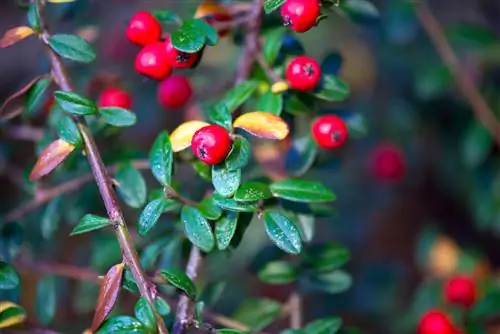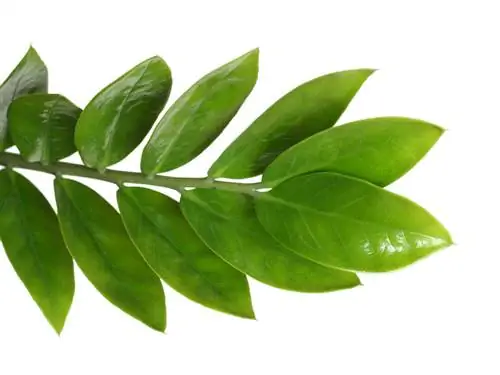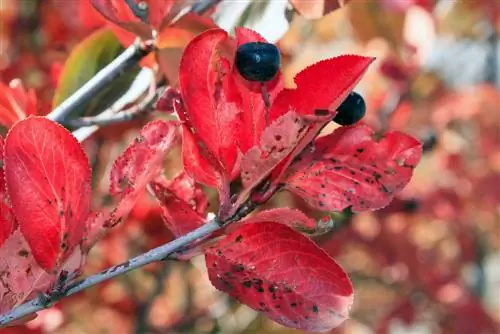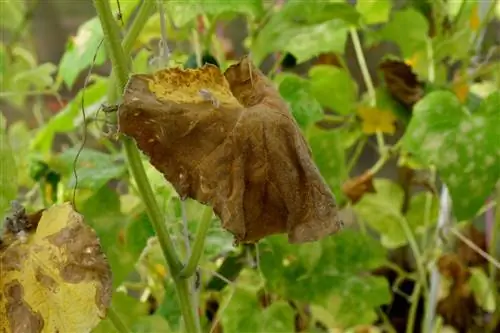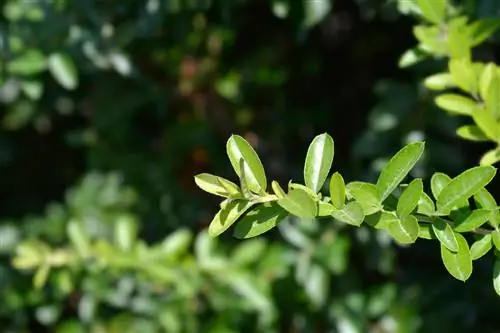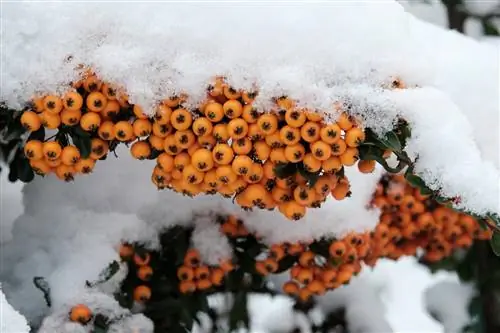- Author admin [email protected].
- Public 2023-12-16 16:46.
- Last modified 2025-10-04 22:19.
The firethorn is one of the evergreen shrubs that offer an attractive sight all year round with their dark green leaves and bright fruits. If the leaves turn brown, this can have various causes, which we would like to go into in more detail here.
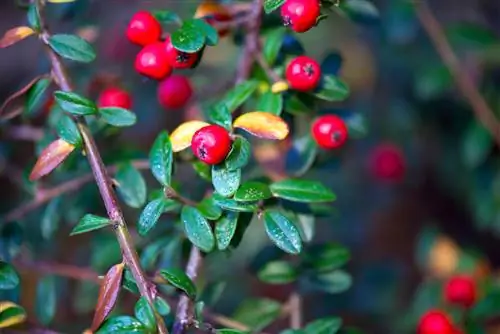
Why does the firethorn get brown leaves?
Scab fungiare often responsible for the foliage of the firethorn turning brown. The dreadedFire blightalso results in browning of the leaves. Wilting fungi in the root area, frost or overwatering can also lead to leaf discoloration.
Which fungi can cause brown leaves on firethorn?
You can recognize an infestation withscab fungiby the characteristicgrey-brown fungal turfon theleaf surface. The fungal mycelium runs through the entire leaf and parts of the bark.
Fighting scab is difficult due to the long infection period:
- Cut all affected branches back deep into the he althy wood.
- Dispose of the clippings in the household waste.
- To prevent spread, carefully disinfect all cutting tools.
In cases of scab fungal infestation, spraying with pesticides is unlikely to be successful.
How do I recognize a fire blight infection?
Already inspringtheleavesand theflowersof the firethornchange color brownblack and look burned. The affected shoot tips bend downwards. A colorless, later yellowish-brown bacterial mucus emerges from the infection sites. The dead areas on the branches and trunk resemble canker sores.
Since there is no effective remedy against fire blight, affected trees must be cut back or cleared by a specialist.
This firethorn disease is notifiable. You can find out about the appropriate measures from the responsible plant protection office.
Does frost cause firethorn leaves to turn brown?
Like manyevergreenplants, thefirethorn is susceptibletofrost damage,which is caused by a brown coloring of the leaves becomes noticeable:
- On clear frosty days, sunlight warms the foliage of the firethorn.
- The water in the firethorn leaf evaporates.
- Because the ground is frozen, the shrub cannot absorb fresh water.
- The leaf tissue dries up and turns brown.
- In spring the firethorn sheds these leaves and replaces them with new ones.
Can too much water cause brown leaves?
The drought-loving firethorn reacts verysensitivetowaterlogging,which leads toroot rotand in the Follow tobrown leaves leads. This plant disease can be triggered by fungi or bacteria.
These find optimal living conditions in wet, compacted soils. They dissolve the cell walls of the storage organs, which become soft and can no longer fulfill their function. The pathogens clog the conductive pathways and the firethorn begins to wilt, which is noticeable, among other things, through discoloration of the leaves.
Tip
A protected nesting place for our feathered friends
Birds like to use the firethorn as a nesting place because the dense branches with the strong thorns protect them from enemies. They feed on the attractively colored berries, but also on insects that live on the leaves. That's why the robust ornamental shrub rarely suffers from massive pest infestations.

